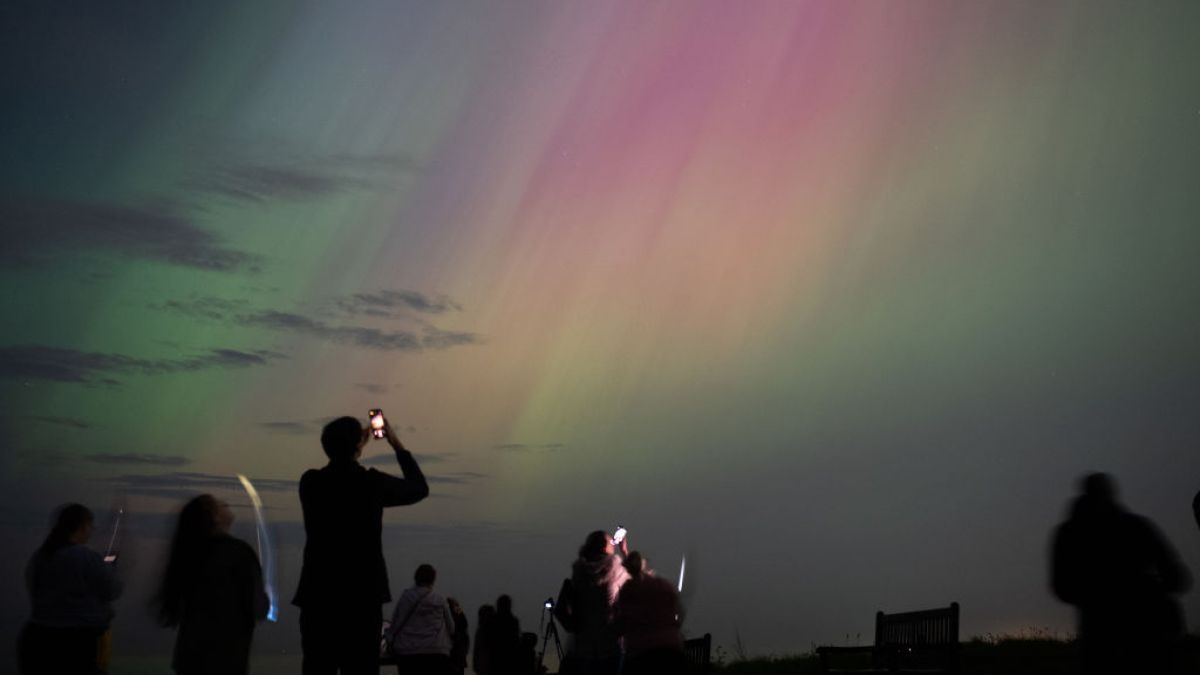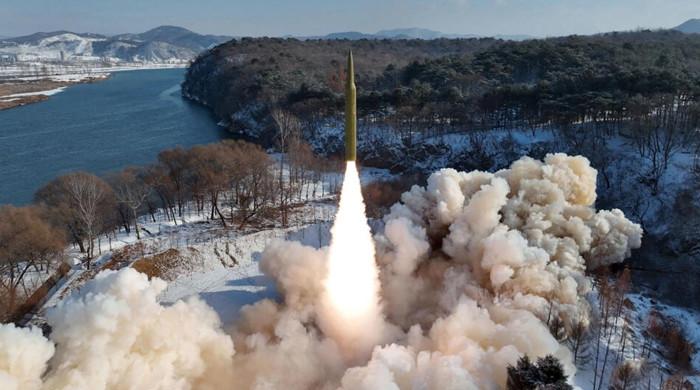Weather experts are warning of possible disruptions to power grids and communications as the sun continues in the coming days.
The most powerful solar storm in more than 20 years has hit Earth's atmosphere, raising warnings about possible disruption to power grids and satellite communications, while producing spectacular celestial light shows in some parts of the world.
The US National Oceanic and Atmospheric Administration (NOAA), which issued a rare solar storm warning, said the solar flare reached Earth around 16:00 GMT on Friday, hours earlier than expected.
The first of several coronal mass ejections (CMEs), described as ejections of plasma and magnetic fields from the sun, was later converted by NOAA to an “extreme” geomagnetic storm.
It was the first solar storm to occur since the Halloween storms of October 2003, which caused blackouts in Sweden and damaged electrical infrastructure in South Africa.
According to NOAA, more solar ejections are expected in the coming days and possibly into next week.
The US agency alerted operators of power plants and spacecraft in orbit to take precautions.
Fluctuating magnetic fields associated with geomagnetic storms induce currents in long cables, including power lines, which can potentially cause blackouts. Long pipelines can also be electrified, creating engineering problems.
Spacecraft are at risk of high doses of radiation, although the atmosphere prevents it from reaching Earth.
After a particularly strong spike, NOAA's Space Weather Prediction Center said users of high-frequency radio signals “may experience temporary degradation or complete loss of signal on much of the sunlit side.” from the earth”.
Unlike solar flares, which travel at the speed of light and reach Earth in about eight minutes, CMEs travel at a steadier pace, and officials put the current average at 800 kilometers (500 miles) per second. .
They said the CMEs emanated from a huge sunspot cluster that is 17 times wider than Earth.
Even pigeons and other species that have internal biological compasses could be affected. Pigeon keepers have noticed a reduction in the number of birds returning home during geomagnetic storms, according to the Jet Propulsion Laboratory of the US space agency NASA.
The most powerful geomagnetic storm in recorded history, known as the Carrington Event after British astronomer Richard Carrington, occurred in September 1859.
Extreme geomagnetic conditions (G5) have been observed! pic.twitter.com/qLsC8GbWus
— NOAA Space Weather Prediction Center (@NWSSWPC) May 10, 2024
'Gift from space'
Social media was filled with people posting photos of auroras from northern Europe and Australasia.
“We just woke up the kids to go see the Northern Lights in the backyard! Clearly visible to the naked eye,” he told AFP news agency Iain Mansfield in Hertford, England.
That sense of wonder was shared in the Australian island state of Tasmania.
“Absolutely biblical skies in Tasmania at 4am this morning,” photographer Sean O'Riordan posted on X along with a photo.
The storm could also produce the northern lights as far south as Alabama and throughout northern California, according to NOAA.
But it was difficult to predict and experts stressed that it would not be the dramatic curtains of color normally associated with the northern lights, but rather splashes of greenish hues.
“That's really the gift of space weather: the aurora,” Rob Steenburgh, a scientist at the Space Weather Prediction Center, told the Associated Press news agency.












